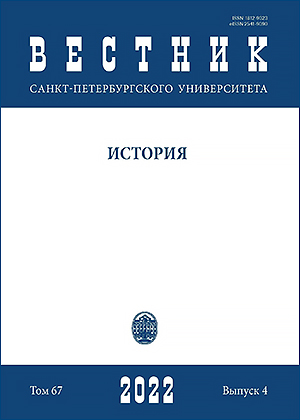Armenian Charitable Organisations of Constantinople and the Problem of Female Emancipation
DOI:
https://doi.org/10.21638/spbu02.2022.408Abstract
The aim of the research is to study the activities of Armenian national, charitable organizations, boards of trustees, unions, colleges and schools established in the large cities of the Ottoman Empire with considerable Armenian population, particularly in Constantinople, in the second half of the 19th century. The charities helped schools and colleges with clothing, daily allowance, stationery, and financial means. The study undertakes to classify these companies and unions according to the purpose of their humanitarian and patriotic activities and their ideological basis. It is important not only in terms of systematization of charities and colleges but also in terms of women's issues in Armenology. The relevance of the study concerns the formation of ideas about women's issues and the awakening of women's self-consciousness in the second half of the 19th century and the beginning of the 20th century. As a result, in the context of women's emancipation processes, not only the function of the Armenian charitable associations and colleges founded in the Ottoman Empire in the second half of the 19th century, but also their goals, plans, strategies, and ideological bases have been studied. In addition, the research examines the issues of women's rights, emancipation, education, and upbringing in the period in question. Charities, schools and colleges founded by women functioned as a result of activities for the benefit of the nation. Many graduates of these institutions later became teachers, worked in newly opened schools and colleges, and spread progressive ideas of women's emancipation.
Keywords:
Constantinople, Ottoman Empiere, Armenian charities, education, colleges and schools
Downloads
References
Downloads
Published
How to Cite
Issue
Section
License
Articles of "Vestnik of Saint Petersburg University. History" are open access distributed under the terms of the License Agreement with Saint Petersburg State University, which permits to the authors unrestricted distribution and self-archiving free of charge.





